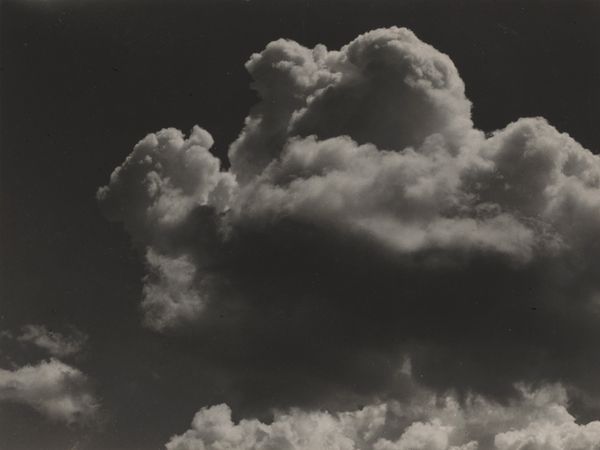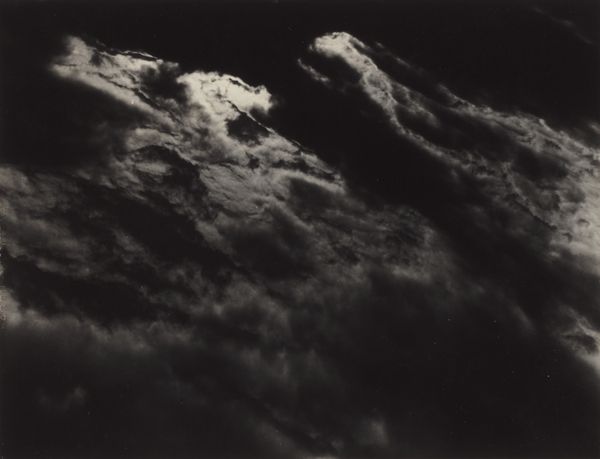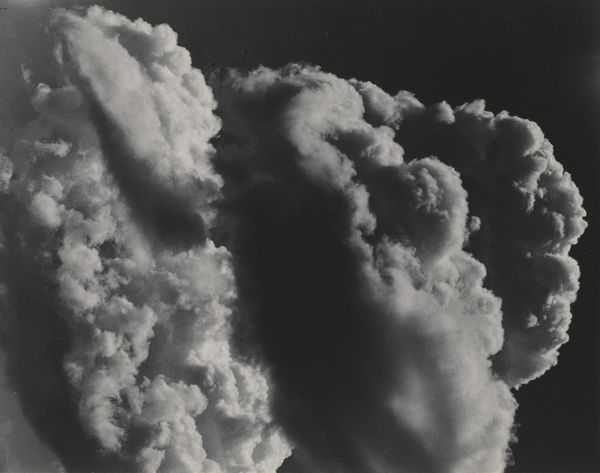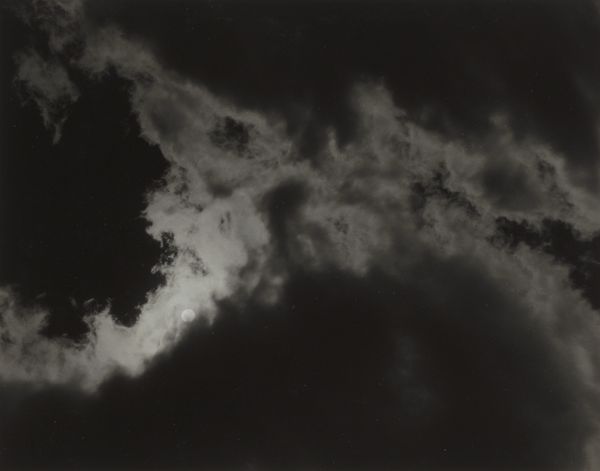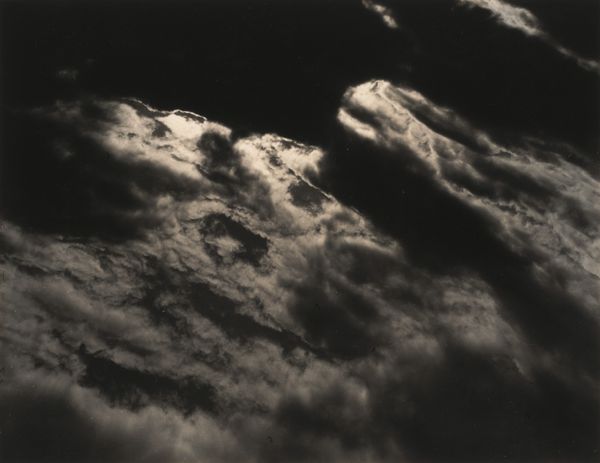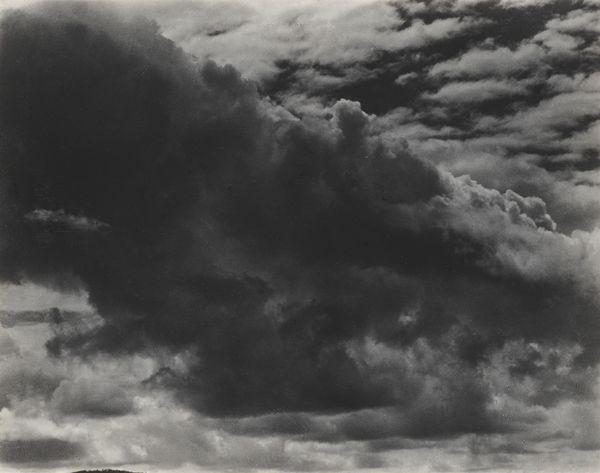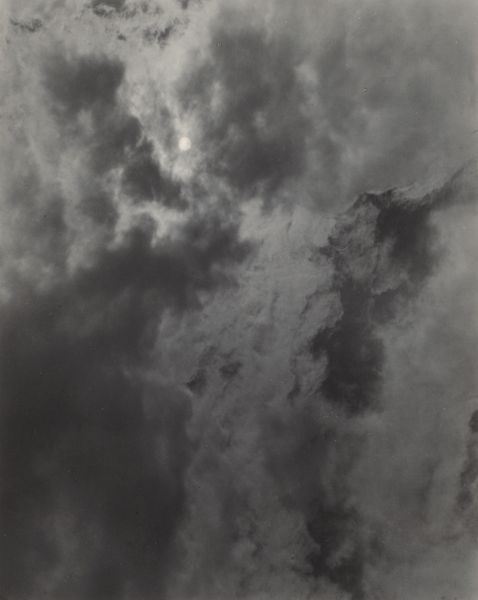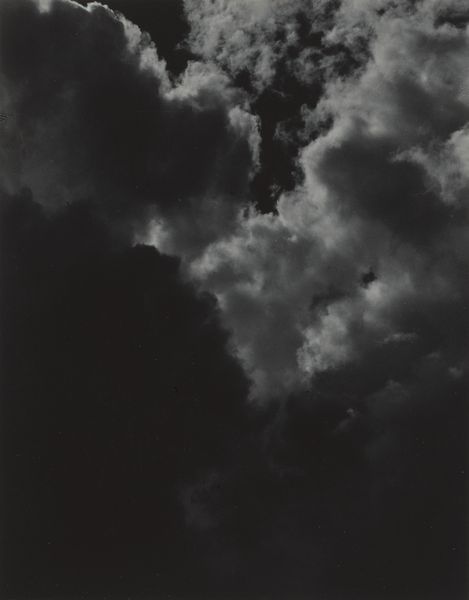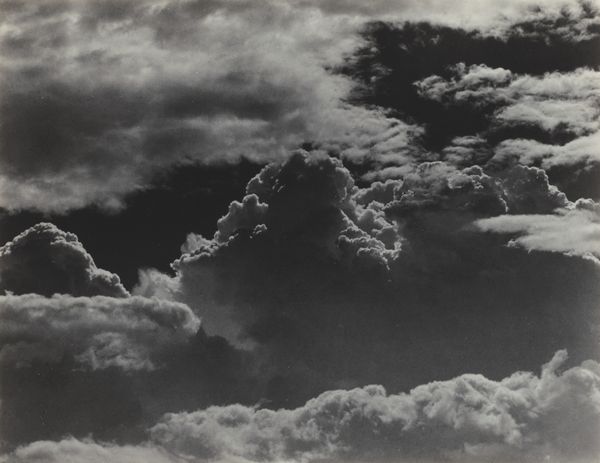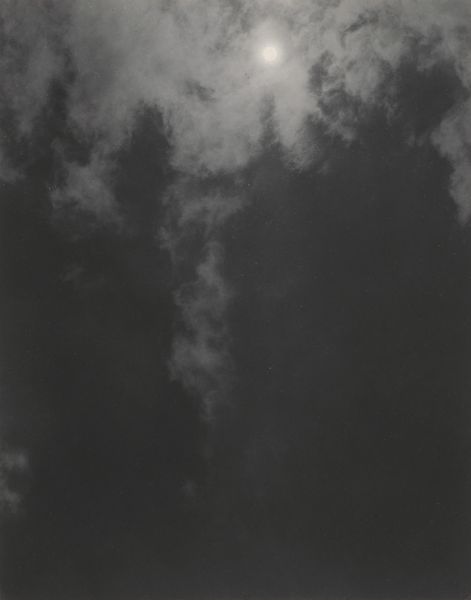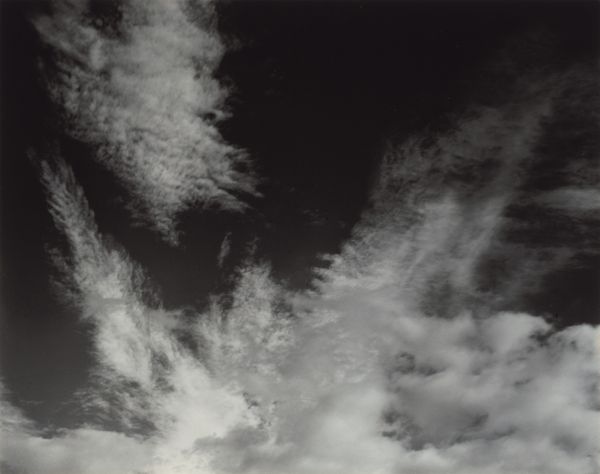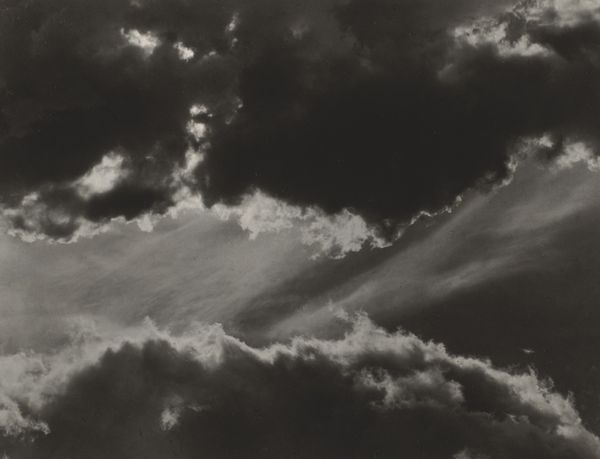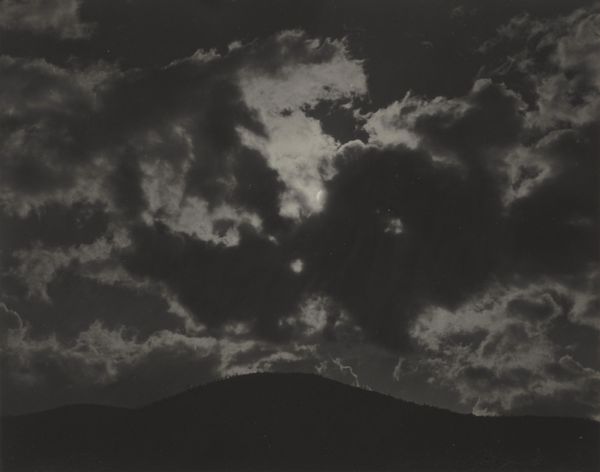
Dimensions: sheet (trimmed to image): 9.1 x 11.7 cm (3 9/16 x 4 5/8 in.) mount: 34.2 x 27.5 cm (13 7/16 x 10 13/16 in.)
Copyright: National Gallery of Art: CC0 1.0
Editor: Here we have Alfred Stieglitz's "Equivalent X2" from 1927, a gelatin-silver print. The contrast between the dark sky and bright cloud is striking, giving it a very dramatic feel. What do you see in this piece? Curator: Immediately, the interplay of light and shadow draws the eye. The cloud mass, dominating the frame, is meticulously rendered in a range of gray tones, showcasing Stieglitz's masterful command of photographic technique. Notice how the composition guides our vision; the solid mass of the cloud set against an almost undifferentiated black background creates a study in form. Does the lack of a clear horizon line affect your perception of space within the photograph? Editor: It definitely makes it feel less like a traditional landscape. It's like the cloud is floating, almost abstract. Curator: Precisely. The objective isn't representational accuracy. Rather, the cloud serves as a vehicle for exploring pure form. Observe the texture – the subtle gradations, the almost sculptural quality of the cloud. Consider also the emotional resonance conveyed solely through these formal elements. What emotional response do you find emerging? Editor: A sense of awe, maybe a little bit of solitude? It’s powerful despite being so simple. I appreciate the focus on form rather than just subject matter. Curator: Indeed. Stieglitz sought to prove photography’s merit as fine art, distinct from mere reproduction. Through focused formal elements like tone, texture, and composition, a common subject – a cloud – ascends into something that evokes sentiment beyond words. This image embodies how a photograph can become its own expressive end, separated from direct depiction. Editor: Seeing how Stieglitz used only the elements of photography to express something so profound really opened my eyes to how abstract photography can be. Curator: And hopefully, underscores the potency of formal analysis when engaging with art.
Comments
No comments
Be the first to comment and join the conversation on the ultimate creative platform.
